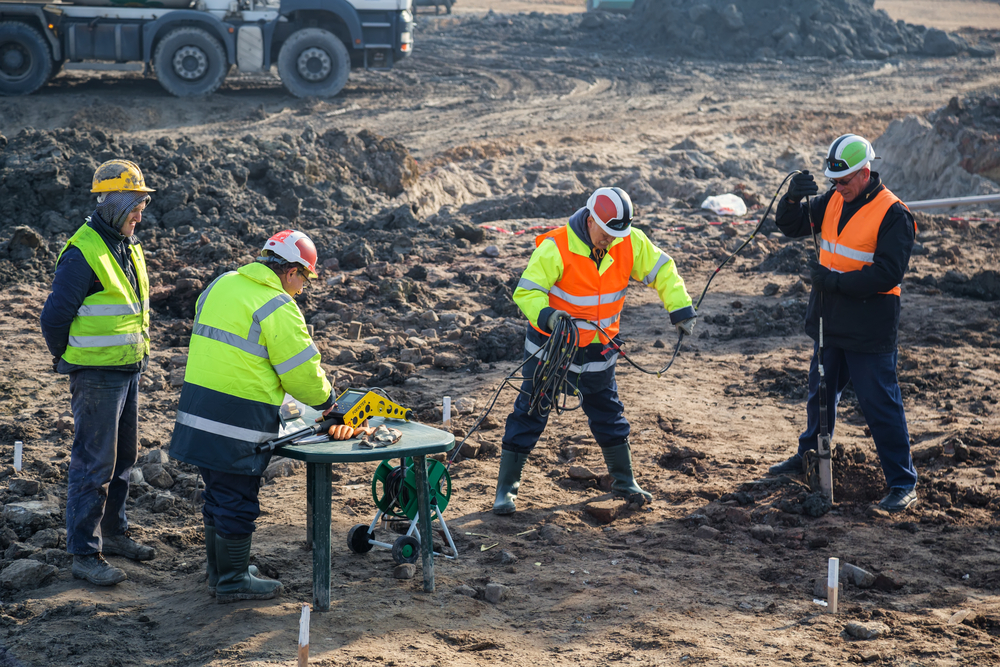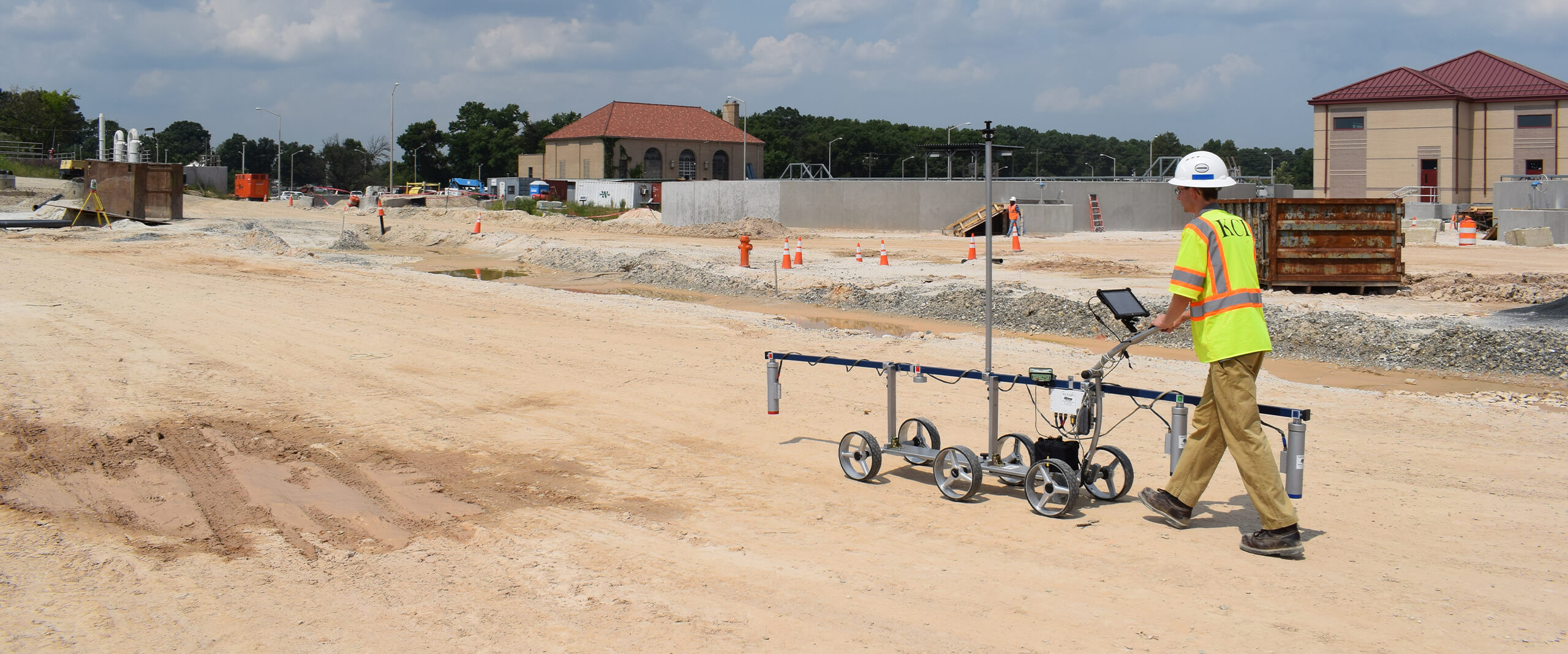The Function of a Consulting Engineer in Ensuring Safe and Effective Building Practices
Wiki Article
Discovering the Cutting-edge Strategies and Technologies Shaping the Future of the Geotechnical Market for Lasting Engineering Solutions
The geotechnical market is undergoing a transformative change, driven by innovative methods and technologies that stress sustainable design solutions. Advanced dirt stabilization techniques, the use of wise products, and the application of data analytics are redefining just how we approach facilities challenges.Advanced Soil Stablizing Techniques
Dirt stabilization is an important process in geotechnical engineering, focused on enhancing the physical properties of dirt to improve its load-bearing capability and resilience. Advanced soil stabilization strategies play a critical duty in addressing difficulties linked with unsteady or weak dirts, therefore enabling risk-free and efficient building and construction practices.Among the famous approaches, chemical stabilization involves making use of ingredients such as lime, concrete, or fly ash, which respond with soil particles to develop a much more natural mass. This technique is particularly efficient in enhancing the stamina and dampness resistance of expansive clay dirts. Mechanical stablizing, on the various other hand, entails the physical alteration of dirt homes with compaction or the consolidation of granular products, causing enhanced density and stability.
An additional ingenious technique is the use of geosynthetics, which give reinforcement and lower soil disintegration while enhancing water drainage. Methods like soil mixing and deep dirt stabilization are also obtaining grip, enabling in-situ treatment of problematic soils. Collectively, these innovative approaches not just enhance the efficiency of dirt frameworks however likewise add to lasting design methods by lessening the requirement for comprehensive excavation and material transportation.
Smart Products in Geotechnics
Advancement is at the forefront of geotechnical design, especially with the consolidation of smart products that improve the performance and capability of dirt structures. Smart products, such as form memory alloys, piezoelectric materials, and self-healing polymers, are revolutionizing the means engineers approach dirt stabilization and infrastructure long life (geo tech engineer). These materials can adjust to altering environmental problems, react to stress, and also repair themselves, significantly boosting the durability of geotechnical systemsFor instance, piezoelectric products can generate electrical charges in feedback to mechanical anxiety, offering possible for real-time tracking of dirt conditions and architectural integrity. In a similar way, self-healing materials can autonomously fix damages and cracks, minimizing maintenance expenses and extending the life expectancy of geotechnical assets. The integration of these wise products not just enhances the mechanical residential or commercial properties of dirt yet also contributes to lasting engineering practices by lessening source consumption and environmental influence.
As the geotechnical sector continues to develop, the fostering of clever materials will play an important duty in developing innovative options, making certain that infrastructures are not only robust but likewise versatile to future difficulties. This transformative strategy is positioned to redefine the criteria of safety and performance in geotechnical engineering.
Data Analytics for Infrastructure
The combination of wise materials in geotechnical engineering has paved the method for sophisticated methods, specifically in the world of information analytics for framework. This cutting-edge strategy leverages considerable information collection and logical strategies to boost decision-making procedures throughout the framework lifecycle. By making use of sensing units installed in wise materials, engineers can continuously keep track of crucial parameters such as soil stability, moisture degrees, and architectural honesty.Information analytics makes it possible for the improvement of raw information right into actionable insights, enabling anticipating upkeep and enhanced risk management. Advanced formulas and artificial intelligence methods help with the identification of abnormalities and patterns, which can optimize and educate prompt interventions source allowance. Furthermore, integrating geographical info systems (GIS) enhances spatial evaluation, additional enriching the decision-making structure.
As infrastructure tasks expand in complexity, the dependence on data analytics becomes significantly vital. It fosters an aggressive method, minimizing the chance of failures and making sure the longevity and sustainability of frameworks. By utilizing the power of information analytics, the geotechnical industry is placed to not only improve current methods yet also leader ingenious remedies for future facilities difficulties. This synergy of innovation and engineering concepts will define the future of sustainable infrastructure development.

Sustainable Ground Renovation Methods
Numerous sustainable ground enhancement methods are arising as important options to address the obstacles of geotechnical engineering while lessening environmental effect. These approaches not only boost soil performance yet also promote eco-friendly stewardship by decreasing dependence on traditional, a lot more intrusive techniques.
An additional innovative approach is the application of geosynthetics, that includes eco-friendly materials that strengthen soil while advertising water drainage and erosion control - geotechnical engineers. This minimizes the demand for heavy equipment and decreases site disruption, hence protecting local environments
On top of that, techniques such as dynamic compaction and vibro-replacement have actually evolved to include sustainable techniques, decreasing and integrating recycled products carbon impacts. engineer of record These methods exemplify the market's shift in the direction of even more eco responsible services, guaranteeing that ground renovation not just satisfies design requirements yet also adds positively to the surrounding environment.
Developments in Environmental Monitoring
Over the last few years, advancements in environmental tracking have actually substantially enhanced the capability to evaluate and handle geotechnical tasks with minimal ecological disruption. Innovative technologies, such as remote sensing, Internet of Things (IoT) devices, and real-time information analytics, are changing just how ecological effects are determined and alleviated.Remote noticing innovations, including satellite imagery and air-borne LiDAR, promote the fast evaluation of land use changes and environmental problems - tailings engineer. These tools enable continual tracking of sites, enabling designers to determine prospective issues prior to they intensify. Additionally, IoT tools, outfitted with sensors for parameters like dirt gas, temperature, and dampness discharges, provide real-time data streams that boost the understanding of site-specific environmental variables
Real-time data analytics additionally refine decision-making procedures by integrating information from different sources, enabling positive monitoring methods. This holistic strategy not only makes certain compliance with ecological policies yet likewise advertises sustainable techniques within the geotechnical industry.
As these advancements continue to progress, they hold the potential to connect the void between design objectives and ecological stewardship, fostering a much more lasting future for geotechnical jobs worldwide.
Verdict
Finally, the geotechnical market is undertaking a transformative evolution driven by ingenious strategies and technologies that focus on sustainability. Advanced dirt stabilization techniques, the assimilation of smart materials, and the application of data analytics collectively boost the resilience and effectiveness of framework. Sustainable ground renovation methods and developments in environmental tracking underscore the industry's dedication to environmental stewardship. These advancements not only address modern design challenges but likewise lead the means for an extra lasting future in geotechnical techniques.Methods like soil blending and deep dirt stabilization are additionally obtaining traction, allowing for in-situ therapy of troublesome soils. Jointly, these sophisticated methods not just enhance the performance of dirt structures yet likewise contribute to lasting engineering techniques by lessening the requirement for extensive excavation and product transport.

Report this wiki page